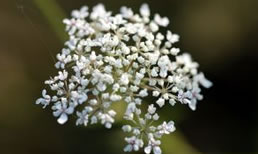 Yarrow (achellia millefolium) has, over time become increasingly popular for its various uses and health benefits. Unbeknown to many, yarrow is extremely easy to grow and propagate, making it a simple and efficient plant to grow in the garden.
Yarrow (achellia millefolium) has, over time become increasingly popular for its various uses and health benefits. Unbeknown to many, yarrow is extremely easy to grow and propagate, making it a simple and efficient plant to grow in the garden.
Unfortunately yarrow is considered to be an invasive species in some areas, and thus care may need to be taken to ensure that the plant does not spread to other areas of the garden.
Climate
Yarrow is extremely tolerant when it comes to climate.
It is a hardy species that can tolerate both cold and hot climates, giving it the ability to flourish in most climates across the globe.
Yarrow should be placed in a full sun position and can withstand large amounts of wind.
Soil
A well-draining medium loam soil is always to be preferred when growing yarrow. Most potting mixes are sufficient, although manures and compost mixed into regular garden soil may produce better results. Be aware that water logging for extended periods of time may result in unhealthy or dying plants, and so drainage is of high priority.
Diseases & pests
Yarrow is known to be extremely tolerant of disease and is not affected by any known pests making it a delight for the lazy gardener.
Propagation
Yarrow is in most cases very easy to propagate by seed.
Seeds can be planted out in spring planted in groups of 5 or so. Space each group of seeds around 50cm apart and place the seeds just below the surface of the soil. Water should be applied extremely lightly (as to not disturb the tiny seeds) making sure that the soil does not dry out.
Soon, the tiny shoots will become visible and should be kept slightly damp until they grow larger and stronger.
The seeds can be collected from the dried flower heads of mature plants and saved for future planting.
Water requirements
A good weekly watering in summer is required to maintain yarrow. When lacking in water, leaves will become noticeably droopy and appear to be on their last legs, but within a few hours of watering the plant will return to its regular posture.
Fertiliser
Yarrow should be fertilised around once a year in the warmer months with a complete fertiliser or a layer of compost spread over the top soil. Any flower fertilisers suited to daisies are also appropriate.
Spreading
In many areas, yarrow will quickly spread and take over its surrounding landscape. To ensure that this does not happen it is advisable to cut any flowers from the plant as soon as they begin to dry out, ensuring that no seeds have a chance to make their way into the soil and germinate.
It may also be necessary to dig plants from the soil every few years if they spread from the roots.
Potted yarrow
A common way for gardeners to avoid the spread of yarrow is to plant it into pots, thus avoiding new plants sprouting from its roots.
As it has low water a requirement, yarrow is generally easy to care for when grown in a pot and can be an attractive decoration around the house when in flower.